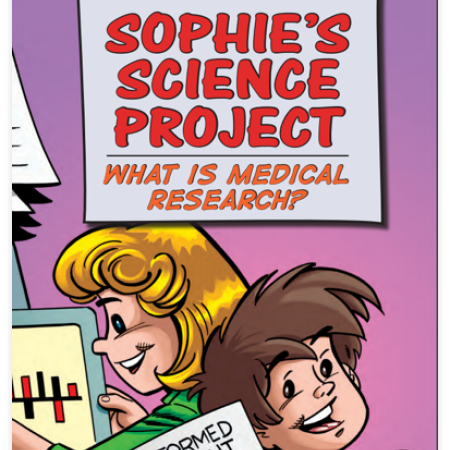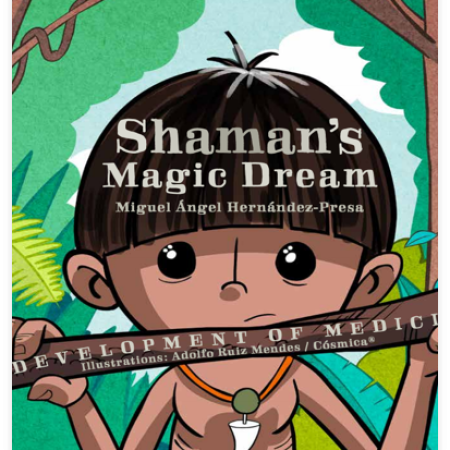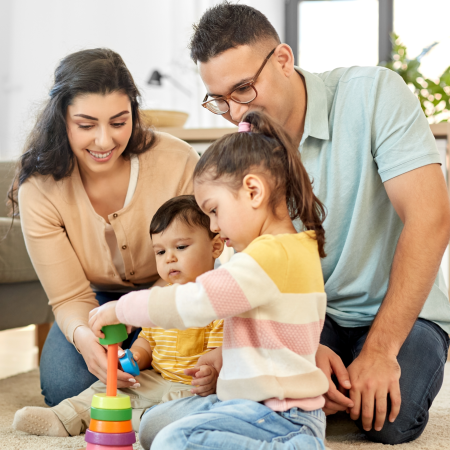Another tool is Sophie’s Science Project, developed by Boston Children’s Hospital in partnership with the Children’s Hospital of Philadelphia and Cincinnati Children’s Hospital. This comic book educates children about medical research and the assent and informed consent process.
Participation from children in clinical trials helps us develop medicines that are safe and effective for children.
If you’re considering a clinical trial for a child, it may be helpful to understand why we run these trials in the first place. Sometimes it’s because certain conditions are especially common in children. More generally, it’s because children need treatments studied specifically for them. Their bodies are still developing, and medicines used to treat adults may not affect children in the same way that they affect adults.
Explore our pediatric clinical trials
Pfizer has clinical trials for children across a range of conditions. Select from the list below to view clinical trials looking for participants.
Pediatric clinical trials and safety
Pediatric clinical trials are designed and conducted with children in mind. As with clinical research with adults, it begins with a protocol — the detailed plan for the study and schedule of study activities. However, a pediatric study is designed with special considerations for children.
A pediatric clinical trial could help us develop the correct dose of a medicine for a child, or it could focus on development of a liquid formulation that is easier to swallow. Participation from children in clinical trials helps us develop medicines that are safe and effective for children.
Pediatric clinical trials have additional safety guidelines. As with clinical trials with adult participants, the guidelines are governed by regulatory agencies such as the U.S. FDA, and oversight is provided by institutional review boards or independent ethics committees. In addition, the regulatory agencies require pediatric-specific drug development plans that are reviewed and agreed to by the agencies’ own pediatric experts.
Every clinical trial has an informed consent document that provides details about the study. The study team can answer any questions you or your child have about the study.

Ways to talk to your children about clinical trials
Sophie’s Science Project


Shaman’s Magic Dream
Do children know where the medicines they take when they’re sick come from? How do they know that the medicines help make them better? Who made it possible for the medicines to be in their medicine cabinets?
These are some of the questions we explore in Shaman’s Magic Dream, an educational tool we created to make it easier for you to discuss clinical trials with your child.
Shaman’s Magic Dream


Informed consent and a child participant’s assent
Legally, children are not able to provide informed consent until they reach adulthood. However, children who are old enough and able to do so provide something called assent. Assent is when the child understands and agrees to take part in the clinical trial. Assent forms are age-appropriate and provide information on clinical trials in a format that children can easily understand.
Once a child gives assent to participate, the parents or legal guardians are the ones who provide consent for their child to participate in the trial.
Together, we can advance breakthroughs for all
It is important to have medicines that can treat diseases and conditions in anyone, regardless of their background.
This starts with clinical trials. Many biological and environmental factors, such as genetics, race, ethnicity, age, sex, gender, and where you are born can impact how you may respond to a medicine. Even where and how you live, work and play can affect your health, your risk for disease, or your response to treatment.
When clinical trial participation reflects the diversity of our communities, the more we learn about potential medicines, including how they work for different people. Everyone needs to be represented.
Together, we can advance breakthroughs for all


Frequently asked questions
As part of a clinical trial, your child’s study-related medical care is provided by the study team at the location where he or she is participating. This includes the principal investigator (or study doctor) — the healthcare professional who conducts and takes responsibility for the clinical trial at that location — as well as other study team members.
During the clinical trial, your child may also continue to see his or her regular medical doctors for any care that is not related to the study. It is important for you to tell your study team about other conditions your child might have, and to let the team know which other doctors are caring for him or her. This helps the study team coordinate your child’s overall care.
If your child participates, the clinical trial will provide study-related medical care, and your child’s regular medical doctors will address the other aspects of your child’s health. Your child’s regular medical doctors can also work with the study team to understand the details of the study and any impact it may have on their regular medical care.
What happens in a clinical trial depends on the ‘protocol.’ A protocol is a detailed plan that explains the purpose of the clinical trial and how it will be run. If you are considering a pediatric clinical trial, these details will be explained to you and your child as part of the assent and informed consent process. They include:
- the length of the clinical trial
- the study medicines, procedures, and tests in the clinical trial
- the schedule of study activities
- information about who can participate
- how side effects will be tracked, managed, and reported
- the rules that must be followed
A clinical trial may also have aspects such as randomization, placebo, or blinding.
Every clinical trial is different, so the time commitment for each is also different. Each clinical trial has a detailed plan for study activities. This plan includes the length of time required to participate in the study, the number of appointments related to the study, and what will happen during those appointments. You may also consider the time you will need to travel to the appointments.
As pediatric clinical trials are designed, the impact to the child’s family and personal commitments to school and extracurricular activities must be considered.
During the assent and informed consent process, the study team will walk you and your child through the details of the study. You can ask the study team any questions you have before deciding whether to participate, as well as during the study.




